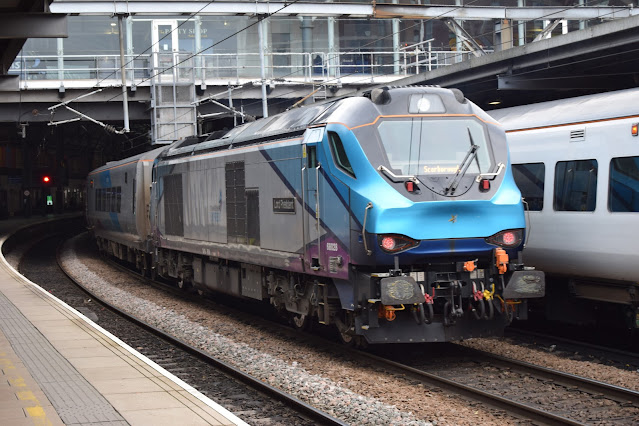Just before the train slowly winds its way through the labyrinth of tracks that is the approach to Leeds station, you get a good view of Elland Road football ground. I’ve been there only once, and Wayne Rooney scored the winner. Proudly emblazoned across the side of the stadium that is visible from the railway are the words “The Jack Charlton Stand”. Even Jack might not have been able to prevent the Everton prodigy having his way on that night. Quite by chance, I had arrived there at the same time as the Leeds coach. An Evertonian, who had obviously been lying in wait for it, gave Nick Barmby a right mouthful for having dared to cross Stanley Park to play for the Reds. At the same time, I also exchanged a much more courteous hello with Dave Watson, not long after his own retirement from EFC. Such things stick in your mind.
I went through Leeds City by train a number of times in the
1960s, but I remember little about the station itself. It seems to have grown substantially
while I’ve been away. It’s now got 18 platforms, plus the sub-divisions [a, b,
c and d]. Its very busy with both people and trains. In fact, there have been a
whole series of alterations and additions to the station since the start of the
millennium. The modern overall roof unfortunately cuts out a lot of the natural
light from the platforms, not helped by an overcast November day. Two spacious
footbridges and a wide paved concourse link it all together. A vast illuminated
overhead screen showing every possible destination from A to Z gave a clear
indication of the variety of routes you can take from here to all points of the
compass.
I headed for the entrance. There are plenty to choose from,
though none seem to give the station the grandeur its size and regional
importance deserve. In addition to the more recently added southern entrance, one
is to the main car park and the access point for buses and taxis, one is totally
dwarfed by the adjacent, imposing, Grade II listed Art Deco Queens Hotel [built
by the LMS railway to replace an earlier one on the same site], and the fourth
currently has temporary sheeting in front of it while work goes on unseen behind
the divide. The food hall and retail area that links the platforms to the City
Square exit is a very attractive period feature, however. It is William Henry Hamlyn’s North Concourse, also
dating from the 1930s, when two former stations were replaced by a modern Leeds
City. A light, airy and attractive space, it was bustling at lunchtime and my
guess would be that many of those enjoying a break were not there for a train,
at all.
Given that this station has clearly evolved in stages in response to pressing needs and increased demand, they have actually made a good job of marrying the [not so] old and worthy of retention with the steel and glass that signifies the modern era. The overall envelope can’t have changed very much over time, as it’s bound up within a city centre site, but rationalisation and improvisation have allowed it to develop to become the third busiest station in England outside London. It may never see HS2, but an emphasis in future on improving services between northern cities suggests that Leeds will just carry on adapting, as it has obviously done regularly since the nineteen thirties.






No comments:
Post a Comment